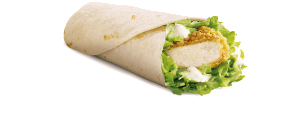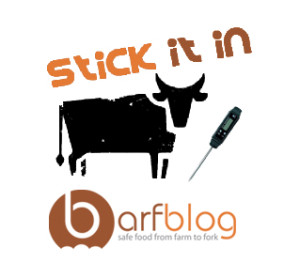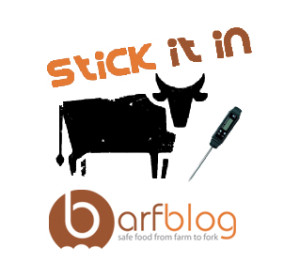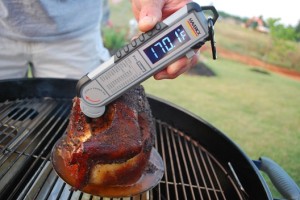I like Schaffner’s response: There is no such thing as risk-free meat, or risk-free food in general. Donald Schaffner, a professor of food microbiology at Rutgers University, told Kiera Butler of Mother Jones that if the food isn’t cooked sufficiently, or if the preparation area isn’t clean, it doesn’t matter whether you’re eating chicken, steak, or pork,” he says. “Food prepared in an unclean environment is always going to be high risk.”
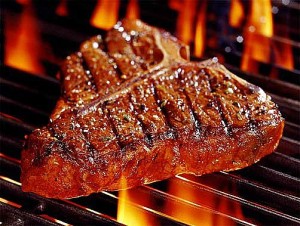 I told her that requesting your meat “well done” or “medium” won’t save you from illness, either. Those terms are vague and subjective, says Doug Powell, a former professor of food safety and current publisher of the foodborne illness site barfblog.com “When I go to a restaurant and they ask me how I want my steak, I say ‘140 degrees,'” he says. “If they give me a funny look I get up and leave.”
I told her that requesting your meat “well done” or “medium” won’t save you from illness, either. Those terms are vague and subjective, says Doug Powell, a former professor of food safety and current publisher of the foodborne illness site barfblog.com “When I go to a restaurant and they ask me how I want my steak, I say ‘140 degrees,'” he says. “If they give me a funny look I get up and leave.”
Butler writes that every time you eat, you’re rolling the germ dice.
But some cuts are more likely to make you sick. In 2013, researchers from the Center for Science in the Public Interest (CSPI) analyzed data about outbreaks, illnesses, and hospitalizations from foodborne pathogens in particular kinds of meat between 1998 and 2010.
Contaminated chicken sickens more people than any other meat. That’s partially because we eat so much of it—more than 50 pounds a year per person. But it’s also because of the way that chicken is prepared and cooked, says Caroline Smith DeWaal, CSPI’s director of food safety. Commercial chicken plants typically dip the meat in several baths before packaging, giving bacteria plenty of opportunity to spread. What’s more, says Smith DeWaal, it’s harder to cook away bacteria in chicken. “Chicken has creases and folds in the skin,” she says. “Pathogens can hide in those folds. A lot of other meat doesn’t even come with skin on.”
Ground beef is the second riskiest kind of meat. One reason for this, says Smith DeWaal, is that during grinding, “the pathogens on the surface of the meat get pushed into the center.” If that ground meat isn’t properly cooked—say, in the middle of a rare burger—the germs get a free ride into your digestive tract.
 Steaks, pork chops, and other whole-muscle meats are the safest bet. That’s because the cooking process can easily kill off bacteria on the cut’s surface, while the inside of the meat is essentially sterile, protected from any potential pathogens—in theory.
Steaks, pork chops, and other whole-muscle meats are the safest bet. That’s because the cooking process can easily kill off bacteria on the cut’s surface, while the inside of the meat is essentially sterile, protected from any potential pathogens—in theory.
But steak isn’t as safe as it should be. According to the US Food Safety and Inspection Service, about 10.5 percent of steaks are subjected to a process called mechanical or needle tenderization, where metal blades or pins repeatedly puncture the meat before packaging. While this technique improves the meat’s texture, it also moves bacteria from the surface into the center of the cut, where the germs may survive cooking. The scary part: Processors are not required to label cuts that have been mechanically tenderized—so there’s no way to know whether your steak might have extra interior bacteria. Mechanically tenderized beef has caused several recent outbreaks, including one in Canada in 2012, which sickened 18 people and led to the biggest beef recall in Canadian history. In 2013, the US Department of Agriculture promised to require labeling on mechanically tenderized beef, but the agency is stalling on finalizing that rule.

